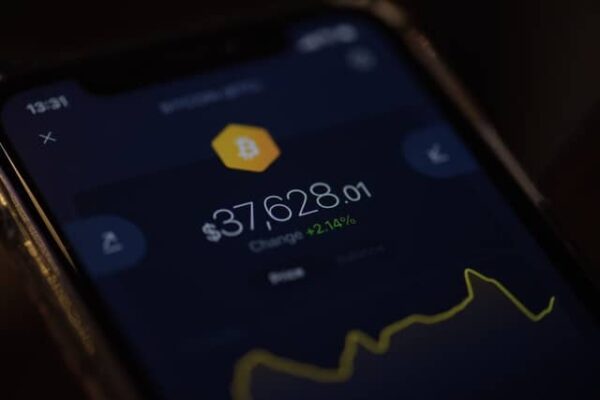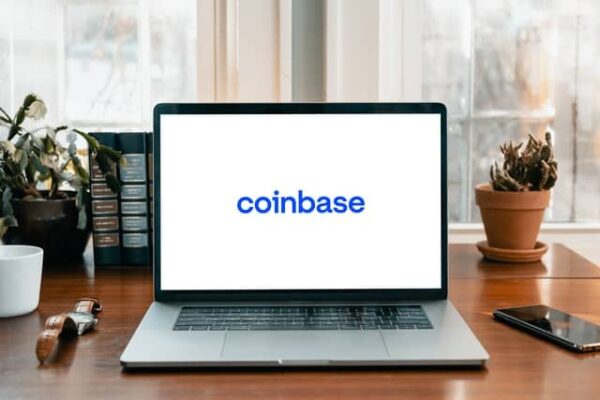Last Updated on January 22, 2025
You need a cold storage wallet once you have enough cryptocurrency to make the expense worth it.
Cold storage wallets are often several hundred dollars and you will incur a transaction fee when you move coins from the exchange to the cold wallet.
Therefore, if you are holding a small amount of crypto, a cold wallet is probably uneconomic. But if you hold, or will hold, a significant amount of crypto then a cold wallet makes sense and is necessary if you care about security.
Exactly where that line is where cold storage becomes economic is a personal matter for you to decide.
What Is A Cold Storage Wallet?
A cryptocurrency wallet comes with a public key and a private key.
The public key is used for identification and is what you use to receive funds. You can share it freely without risk.
The private key is what you use to authenticate transactions and thus to send funds. It is encrypted and not publicly visible.
When you own cryptocurrency what you really own is the private key, which gives you access to the wallet and the ability to sign transactions from that wallet.
Therefore you need to keep it secret and secure.
If someone gains access to your private key, you are at risk of losing all your funds.
“Not your keys, not your crypto” is a famous phrase in the crypto world.
A cold storage wallet secures that private key offline in your possession and is the most secure form of storage.
When you use a cold storage device the private key is never connected to the internet.
When you use a cold storage wallet, the wallet signs the transaction with the private key offline. The signed transaction is then publicly broadcast. But the private key was never online.
The cold storage wallet does not store your cryptocurrency, it stores your private keys. And as long as you have access to your seed phrase, you can restore access to all your cryptocurrency on another device.
Hot Wallet vs Cold Wallet

If you use a hot wallet, like Exodus, you will have access to your private key and therefore this is a better option that just keeping your coins on an exchange.
However, the private key is stored online and crypto transactions are signed online, meaning the private key is connected to the internet.
A hot wallet, therefore, is vulnerable to malware and hackers and is not as secure as a cold storage wallet.
Why Keeping Your Crypto On An Exchange Is A Risk

When you keep your cryptocurrency on an exchange, like Binance or Coinbase, you do not have access to your private key at all.
If you don’t have access to your private keys, then you don’t have full custody over your coins.
What you have is an account with a counterparty, an exchange, with a promise to pay. The problem is, that promise is not always fulfilled.
It is the equivalent of keeping your precious metals in someone else’s vault. You may have a receipt telling you the metals are there.
But how do you know that they are really there and are available on demand? You have to trust your counterparty.
It is also the equivalent of keeping your fiat money in the bank. It is a little known fact that a bank account deposit is not an asset that you own. It is an unsecured loan that you make to the bank. If the bank goes under then you lose access to your funds. Again, you have to trust your counterparty.
Having access to your private key is the equivalent of keeping your precious metals in a home safe.
This is particularly important for cryptocurrency because crypto exchanges are vulnerable to all sorts of problems.
They can be hacked, they can be shutdown, they can be scams or they might lend out your assets without your knowledge. There is also the ever-changing regulatory landscape to consider.
While most reputable banks and precious metals storage facilities are trustworthy most of the time and failure is somewhat rare, crypto exchanges are not reliable at all and problems occur frequently.
The trade-off here is that you have to secure and take responsibility for your private key yourself. This is something that requires careful consideration but it is the safest and most recommended option for storing cryptocurrency.
I learned this lesson the hard way.
Between 2014 and early 2017 I dollar cost averaged into a nice Bitcoin position.
I had a hot wallet with a little bit of Bitcoin in it. But I kept the majority on the exchange. It seemed convenient and, while I understood there was risk, it seemed such a small amount of money at the time. So I was lazy with security.
I had meant to move the funds to my wallet but had put it off because I was busy. I was changing jobs and moving cities. Custody of my Bitcoin was not high on my priority list.
When I finally got around to moving the Bitcoin from the exchange to the wallet, I logged onto the exchange and my coins were frozen. I couldn’t withdraw. Not long after the exchange disappeared.
This was the most expensive mistake of my life.
I was gutted to have done the work, assessed the market risk and made the decision to buy some bitcoin, only to be undone by poor security practices.
I don’t want you to make the same mistake as I did.
How To Get Your Cryptocurrency Into Cold Storage
Step One: Buy a hardware wallet such as Ledger or Trezor. Use a PO Box and preferably a pseudonym. Ledger had their customer database breached once. If criminals have your address and know there might be cryptocurrency there, it would make you a target.

Step Two: Set up the device and the software that accompanies it on your computer.
Step Three: Create a wallet and generate a seed phrase. When you create a wallet on the device you will get a seed phrase, from which your private key is derived. The private key is a long string of numbers and letters, while the seed phrase is normally 12 or 24 words long. That way, instead of trying to store a long alpha numeric sequence, you just have to store a short seed phrase. The seed phrase is all you need to keep secure. If you have that seed phrase, you can always restore your wallet and both the private and public keys.
Step Four: Secure your seed phrase. Write these words down clearly and legibly on a piece of paper. Make sure you are alone. Do not write the words down on your computer or take a photo. Remember, the point is to keep the seed phrase offline and never connected to the internet.
Step Five: Backup and store your seed phrase. Here you have a few options. You can get a steel wallet and record the seed phrase onto steel. Or you can make multiple paper back ups. You also have to decide where to store your backups. You could store them at home but a safety deposit box would be better. If you store it at home, keep it somewhere where it won’t get wet or catch fire. Keep it hidden, in a discrete location but where you won’t forget about it or risk it being thrown out or destroyed accidentally.
Step Six: Move your cryptocurrency. Once you have created a wallet and safely stored your seed phrase you can then move your cryptocurrency from an exchange of a hot wallet to cold storage.
Step Seven: Never share your seed phrase. Never type it into a computer, take a photo of it or tell a friend. Never give it to the customer service department of the company you bought the hardware wallet from. If you ever share your seed phrase, your cryptocurrency is compromised.
These seven steps are a basic yet effective means to get your cryptocurrency into cold storage. There are additional security measures you can take that haven’t been mentioned here if you are an advanced user or have a significant amount of crypto to protect.
The more wealth you have in cryptocurrency, the more important it is to keep it secure. You need a cold storage wallet if you have any significant amount of crypto.
Even if it isn’t worth much now it might be in the future. As you know, cryptocurrency can make rapid moves in short periods of time.
When I lost my Bitcoin in 2017 I was frustrated but I wasn’t devastated because it wasn’t a huge amount of money at the time. But I got pretty annoyed later on when Bitcoin mooned and I had to face the reality that I had made some outstanding buys in terms of market timing but had lost the gains due to lax security and basic mistakes.
If you want to take the extra security steps, I recommend you check out this article at Bitcoin Magazine.
Inheritance Planning
If you are looking to create and preserve generational wealth, it is also worth giving some thought to inheritance planning.
Your next of kin will need to know where and how to access your seed phrase. Potentially you can leave them access to the device as well, although this is not totally necessary as the seed phrase can always be restored on a new device.
As well as gaining custody of the seed phrase, your next of kin will also need to know the basics of cryptocurrency, including how to use a hardware wallet, essential security measures and how to buy and sell.
Of course if you are a Bitcoin HODLer then teaching them to keep the HODL stash and never sell would be a wise move as well.
Conclusion
If you want full control over your cryptocurrency you have to take self custody. That means get your coins off the exchange.
It is too risky keeping large amounts there.
The best way to take self custody is with a hardware wallet. This stores your private key offline and ensures it is never connected to the internet.
Your only job is to safely secure the seed phrase.
It is a big responsibility. Most people are used to keeping their money in the bank and trusting the bank and their security measures to keep their funds safe.
The crypto space is new, not well-established and mostly unregulated. You take a big risk if you trust any counterparty. It is safer to trust only yourself and implement basic yet effective security measures.
Image Credits
Ledger Wallet by Amjith S on Unsplash
Coinbase by PiggyBank on Unsplash
Exodus Wallet by Brian Tromp on Unsplash
